
Probably the most damaging (numismatically) of 'The Crazy Things They Do To Coins' is the production of a ‘cutout’. Silver coins produce a nice profit for tourist shops or street traders. The coin can be sold for a small amount over it's face value whilst keeping the removed metal as pure profit. Some of these items, it must be admitted, are minor masterpieces of ingenuity and craftmanship. Judge for yourself!
A shilling of George IV (1825) cutout, looped and gilded. The cute lion makes this type a strong favourite in the UK. In this, rather crude, example the lettering is kept as a continuous strip.
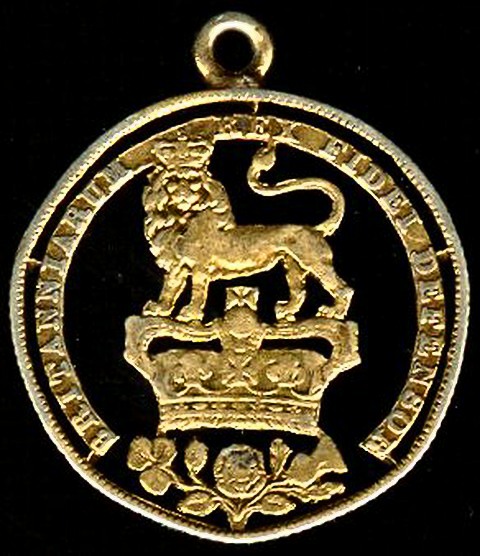
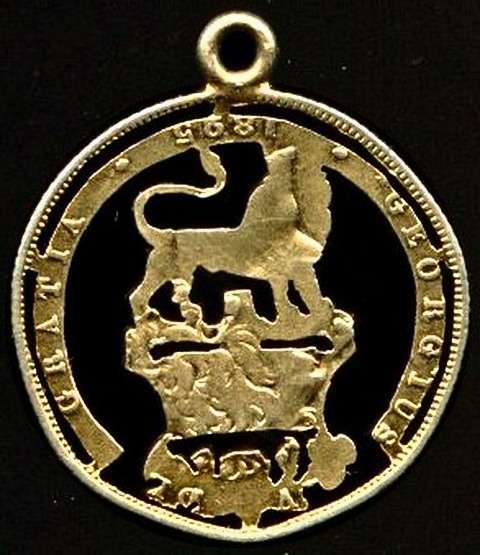
A much greater degree of skill is shown in this fine example of a pendant created from a Halfpenny coin of Edward VII. The King's titles have been replaced with engravings of the national symbols of: England - Rose, Scotland - Thistle and Ireland - Shamrock. As usual, Wales is overlooked.
Probably a Boer War production, the portrait of President Paul Kruger has been embellished with hat and pipe to convert it into the popular caricature of 'Oom Paul' as he was known to the British.
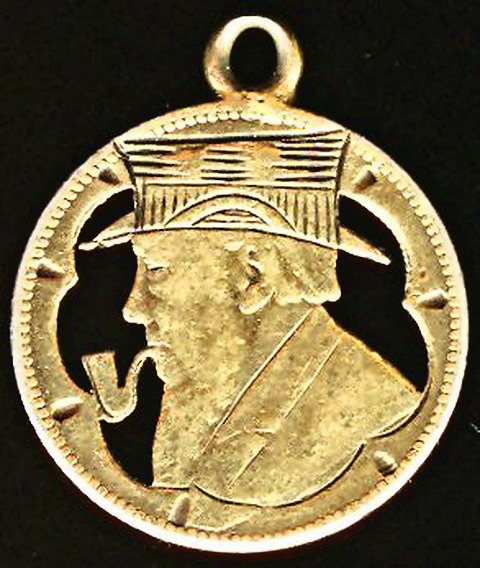
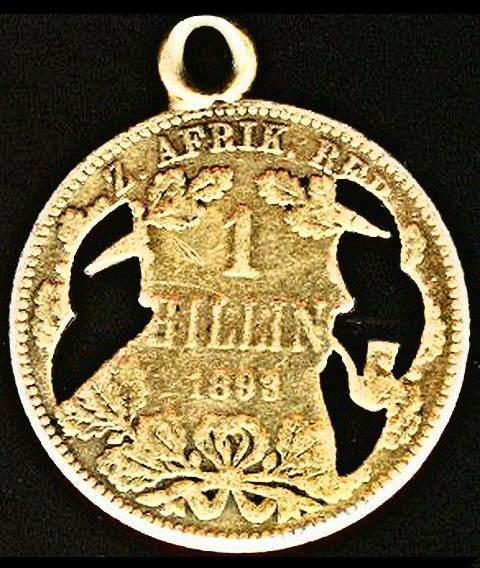
This very pretty bear is part of the armorial of the German state of Anhalt Bernberg. The coin is a Thaler of 1861. The foliage is very detailed.
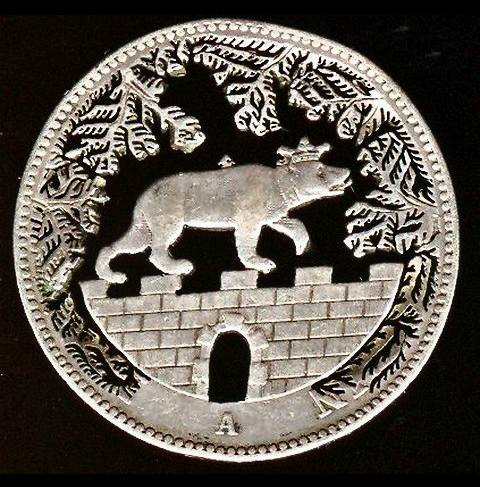
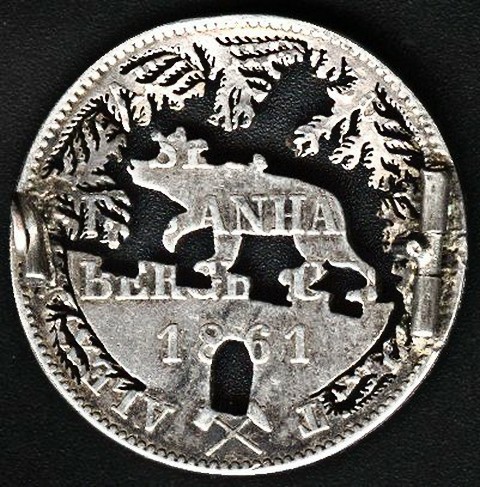
The coin is a Kronenthaler of the Austrian Netherlands dated 1796, Arch Duke Franz II of Austria. Each letter has been individually cut out. Although parts of the 'A's and 'R's have defeated the craftsman. The Crowns and the Paschal Lamb have been very delicately suspended. It all looks much cruder from the reverse.
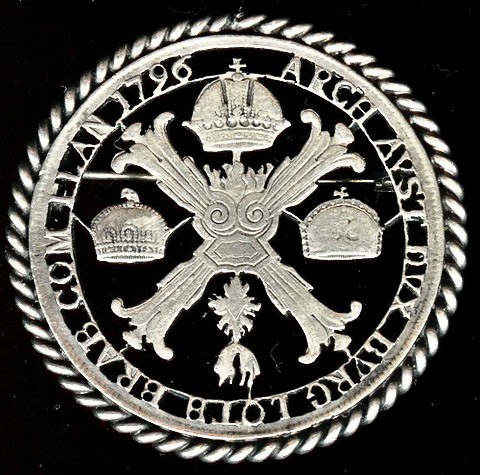
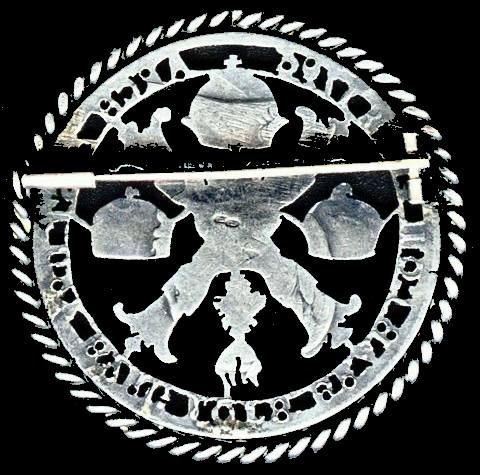
This beautiful brooch is made from a cutout five Corona silver coin, 1909, of Franz Joseph I of Austria. The Emperor's ear can just be discerned in the centre of the reverse and his famous mustache at 4 o'clock. A fine example of cutting out considering that this is a substantial coin.
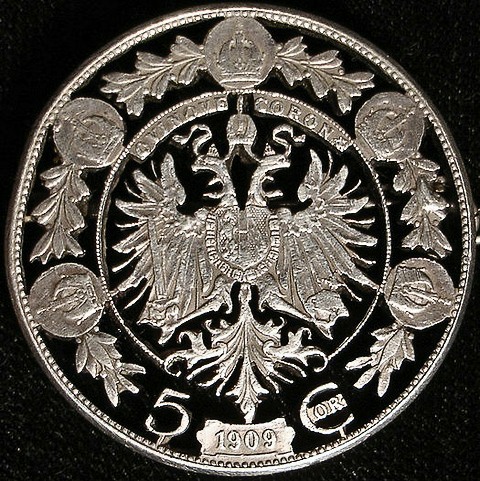
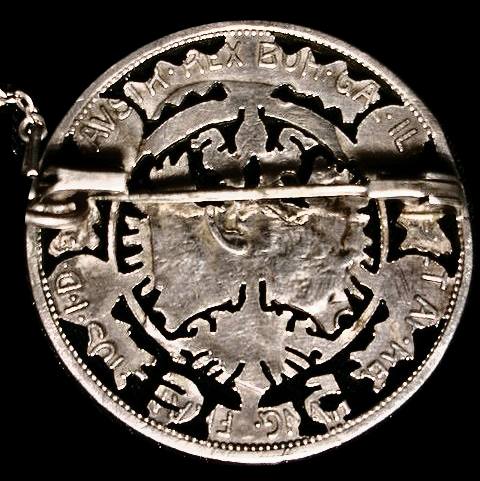
The coin, in this instance, is a two Schilling coin of Austria, 1929 for the anniversary of the birth of Doctor Theodor Billroth. The cutter has made a good attempt at preserving the letters of the legend and the arms of the Austrian States.
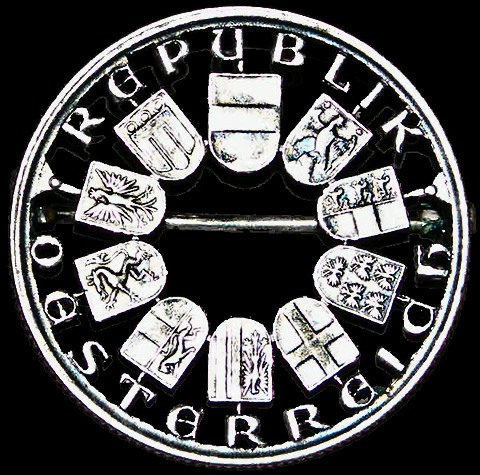
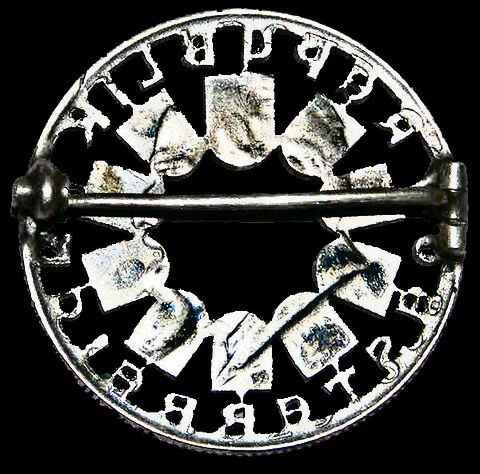
The coin, in this instance, is a two Schilling coin of Austria, 1930. Because this is a 2 'Schilling' coin that includes a harp as part of the design, the eBay vendor thought it was made from an Irish Two Shilling coin.
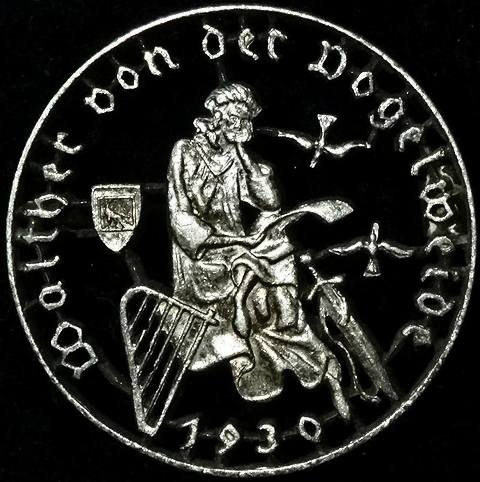
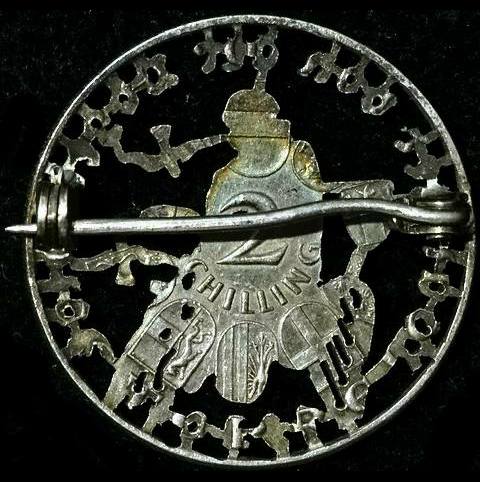
An Aluminium-Bronze One Krone coin of King Christian X of Denmark. The coin was produced until the Nazi occupation. So, possibly a subtly patriotic piece.